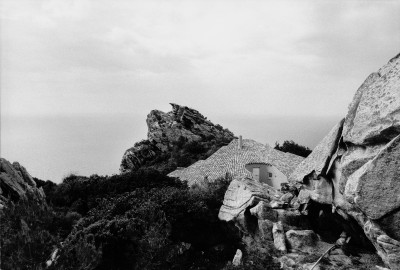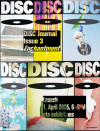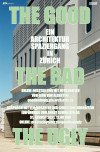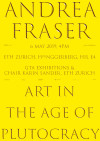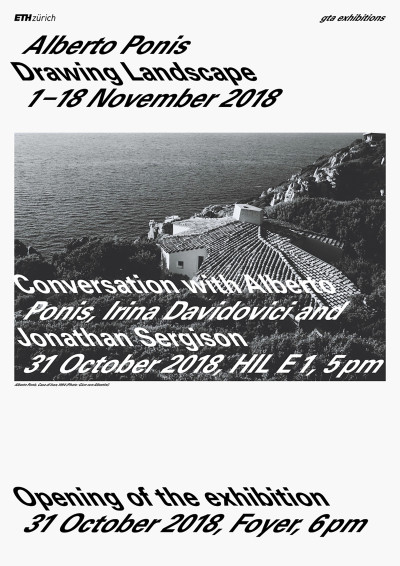
Alberto Ponis. Drawing Landscape
Wednesday, 31 October 2018, 6 pm
ETH Zurich, Hönggerberg
Conversation with Alberto Ponis, Irina Davidovici and Jonathan Sergison at HIL E 1 at 5 pm
I’ve designed more than 300 houses, and none of them was presented to me in a ‘do it any way you like’ commission. And no single project was the same. The clients each responded in different ways. Frankly, some of them were more interesting than others. But I made sure I looked after all of them and considered every detail of their houses. For example, in each of the hundreds of bathrooms I have designed I think carefully where to place the tub. I find a place for everything. Which means for 40 bloody years or so I’ve been here all winter designing houses that people will use in the summer. The huge amount of work this requires means that I have a great difficulty thinking of them in any other way than physically.
Alberto Ponis holds a unique position in contemporary Italian architecture. Born in Genoa in 1933, he studied at the Florence School of architecture. In the early 1960s he worked in London for Ernő Goldfinger, and later for Denys Lasdun. In 1963 Ponis was invited to design his first project in Porto Rafael and began an uninterrupted period of building activity that has resulted in the realisation of more than 300 houses in the north eastern corner of Sardinia.
The majority of the projects built by Ponis are in Sardinia, but it would be inaccurate to characterise him as a “local architect”. His is a world-view and his projects are rooted in a wider understanding of architectural culture. What makes Ponis’ work remarkable is his extreme sensitivity to the circumstances of place, to topography, geology and landscape. While his position is ultimately a modernist one, it can also be understood to fulfil the criteria defined by Kenneth Frampton as a Critical Regional one.
In recent years Ponis’ practice has attracted increasing interest, particularly in the German speaking world. His third book, The Inhabited Pathway: The Built Work of Alberto Ponis in Sardinia, offers an intellectual positioning and a critical framework in which to understand the work. This presents an interesting paradox. Unlike more internationally known Italian architects, Ponis never held an academic position: he was intensely involved in practice and the building of projects, mostly private houses. This book (and the ones that preceded it) is a reflection on a lifetime of building, in counterpoint to the tendency to theorise first and then build. Architectural celebrity was not Ponis’ primary concern, but opportunities allowed him to experiment through building and it was this growing body of work that then prompted reflection.
For the first time drawings from Alberto Ponis’ archive will be on display in an exhibition dedicated to his work, many of which interpret the unique circumstances of a project and the delicate act of placing a house in a landscape. Invariably Ponis’ drawings are produced by hand in pencil and ink, and this charges them with a sense of doubt. They explicitly question the relationships the architect seeks to establish between a built edifice and the rocks, vegetation and existing man-made elements that surround it. In addition to the drawings, photographs by Gion von Albertini, whose extensive documentation of Ponis’ houses has never been exhibited before, will be featured in the show.
Curated by Fredi Fischli and Niels Olsen in collaboration with Irina Davidovici, Jonathan Sergison and Gion von Albertini.
